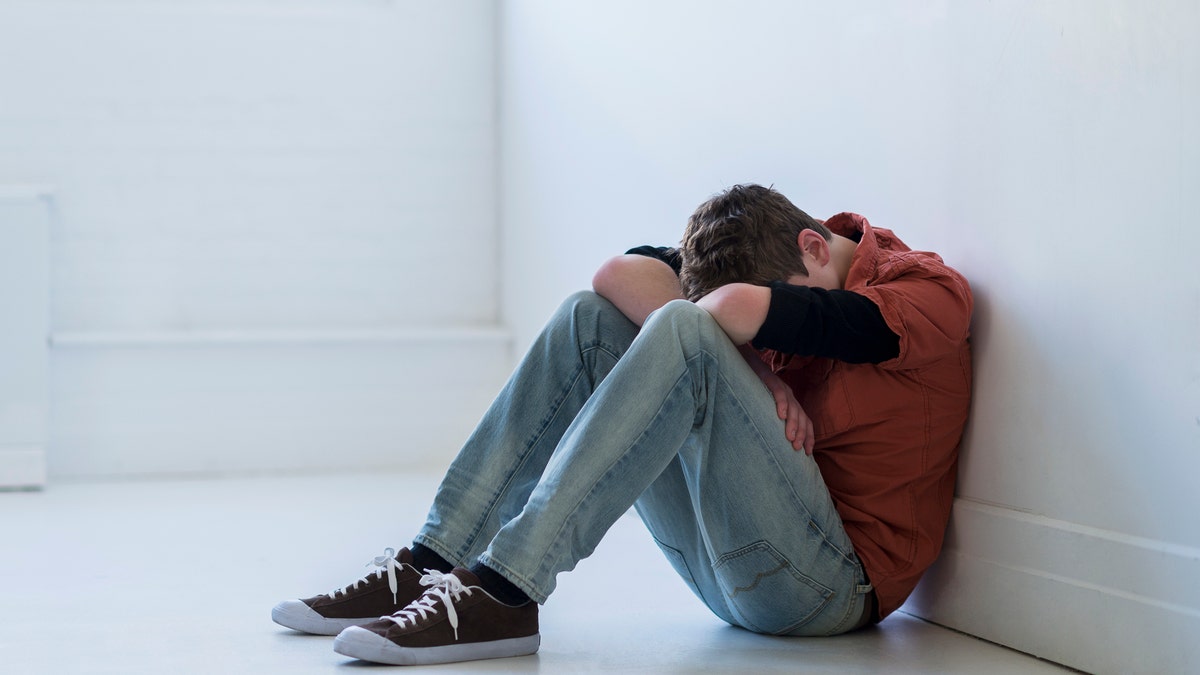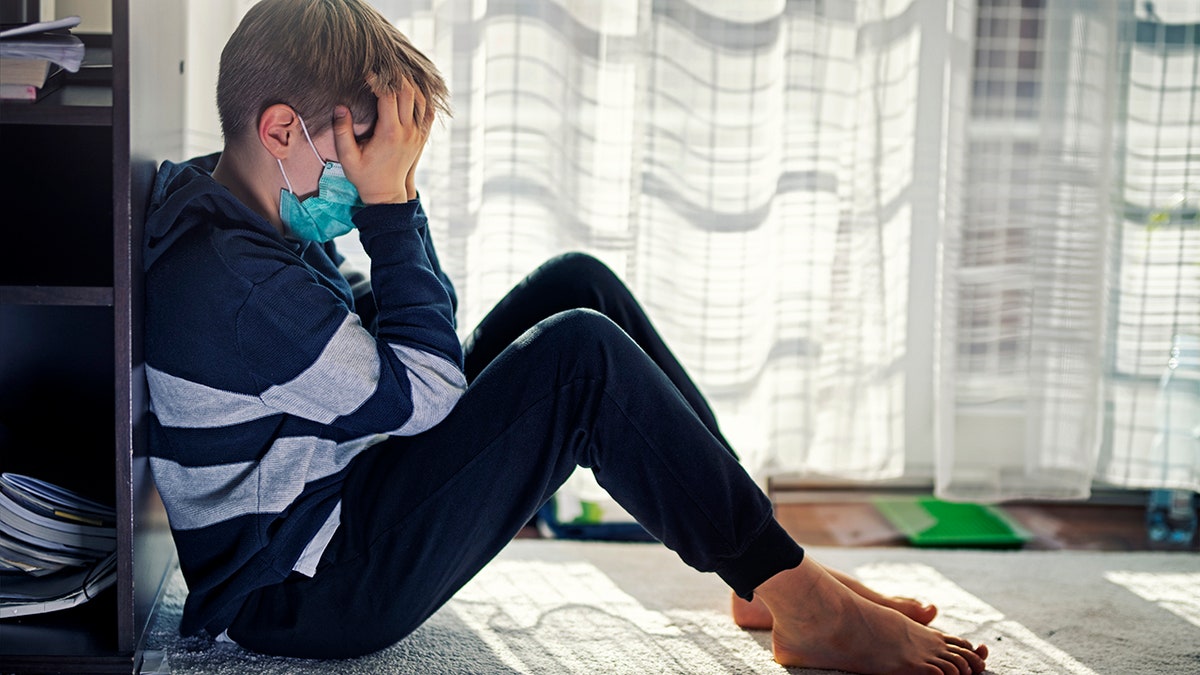Dr. Marc Siegel: Mental health crisis is 'much worse' due to the pandemic
Fox News medical contributor Dr. Marc Siegel discusses factors contributing to the growing mental health crisis among children.
This story discusses suicide. If you or someone you know is having thoughts of suicide, please contact the Suicide & Crisis Lifeline at 988 or 1-800-273-TALK (8255).
A growing number of desperate parents are bringing their mentally ill kids to emergency rooms, even as most hospitals' ERs are not equipped to help beyond addressing immediate safety concerns.
A new study published in the March 2023 Pediatrics journal (published online on Feb. 13) analyzed a Medicaid database and found that more than 26% of children who visited the ER for mental health issues made a repeat visit to the hospital within six months.
Additionally, only about half of those children then had follow-up mental health care within 30 days, said the study, entitled "Follow-Up after Pediatric Mental Health Emergency Visits."
YOUTH OPIOID OVERDOSES ON THE RISE AS SCHOOLS STRUGGLE TO FIGHT THE EPIDEMIC
The lead author of the study, Dr. Jennifer Hoffmann, an attending emergency physician and assistant professor of pediatrics at Ann & Robert H. Lurie Children’s Hospital of Chicago, told Fox News Digital via email, "Only so much can be accomplished during a single ER visit."
She added, "The main purpose is to determine the level of mental health care that a child needs, whether it’s an inpatient psychiatric admission or outpatient services, and to connect the child with ongoing care."

There has been an uptick in the number of children coming into the ER with depression, suicidal tendencies, behavioral health crises and other mental health problems, according to a new study. (Tetra Images via Getty Images)
Low follow-up rates after an ER visit are an indicator of a broken mental health system for children, Hoffmann believes.
The study data was based on a sample of 28,551 children on Medicaid plans between 6 years and 17 years old who visited an ER department for a mental health-related emergency between January 2018 and June 2019.
WARNING SIGNS OF SUICIDE: WHAT TO KNOW ABOUT PREVENTION, RED FLAGS AND HOW TO DEAL WITH THE ISSUE
Three-quarters of those children had more than one mental health diagnosis, but for the purposes of the study, each was assigned a single one.
Thirty-nine percent had depressive disorders, 25.1% had impulse control or behavioral disorders, 14.2% had trauma or stress-related disorders, 8.2% were self-harming and 13.5% had other conditions.
Kids' mental health crisis strains the system
The COVID pandemic triggered a widely recognized mental health crisis.
Between March 2020 and October 2020, CDC data shows that mental health-related emergency room visits rose by 31% for children ages 12 to 17 and by 24% for kids ages 5 to 11, compared to the prior year.

"We help stabilize kids who are in imminent danger," said one pediatric emergency medicine physician, "but ultimately they need to get into outpatient treatment for psychotherapy or long-term depression medicine or any of those things." (REUTERS/Mike Blake)
Dr. Anna K. McFarlin works in pediatric emergency medicine at the Children’s Hospital New Orleans.
She said she's seen an uptick in the number of children coming into the ER with depression, suicidal tendencies, behavioral health crises and other mental health problems.
"Ultimately, we are emergency physicians and pediatricians, not psychiatrists."
"I think the biggest misconception is that we are able to fix the problem or initiate treatment in the ER," Dr. McFarlin told Fox News Digital in a phone interview.
"Ultimately, we are emergency physicians and pediatricians, not psychiatrists. The hospital does have a psychiatrist who comes in for a certain part of the day, but is not available 2/47 in the ER."
That situation is pretty standard throughout the country, the doctor said.
That said, if there is an immediate safety concern — such as kids threatening to hurt themselves or others — Dr. McFarlin said the ER can help facilitate the appropriate treatment, but it doesn’t necessarily provide that treatment.

Between March 2020 and October 2020, CDC data shows that mental health-related emergency room visits rose by 31% for children ages 12 to 17 and by 24% for kids ages 5 to 11 compared to the prior year. (iStock)
"It's not like a laceration that I can sew up and fix and send you on your way," she said.
"It's sort of like going to the podiatrist for your heart problem — we're just not that kind of doctor. We help stabilize kids who are in imminent danger, but ultimately they need to get into outpatient treatment for psychotherapy or long-term depression medicine or any of those things."
Dr. McFarlin said she realizes this can be frustrating, both for the physicians who want to be able to help these families — and for the parents and kids who feel they have no other options.
Trouble 'accessing community-based mental health services’
Experts agree that follow-up mental health care is key after an ER visit — but Hoffmann’s study found that a majority of children did not receive it within 30 days.
REDDIT USER ASKS IF HE WAS WRONG FOR ‘GETTING RID OF’ FOSTER TEEN AFTER COUGH MEDICATION THEFT
"This shows that children and families are having difficulty accessing community-based mental health services after an ER visit," said Dr. Hoffmann.
"Families may return to the ER because they have nowhere else to go to receive the mental health care their child needs."

"We help stabilize kids who are in imminent danger, but ultimately they need to get into outpatient treatment for psychotherapy or long-term depression medicine or any of those things," said one professional. (iStock)
Another reason for the lack of follow-up is a shortage of mental health professionals.
Data from the American Academy of Child & Adolescent Psychiatry, headquartered in Washington, D.C., shows that in the U.S., there are only 14 child and adolescent psychiatrists for every 100,000 children.
This shortage leads to long wait times.
The average wait time for behavioral health services is 48 days, the National Council for Mental Wellbeing of Washington, D.C., found.
Only about half of children who visit the ER for mental health issues get follow-up care within 30 days.
"Pay and reimbursement rates for mental health services are far too low," said Dr. Hoffmann.
"Because of that, too few enter the field. Medicaid reimbursement rates must be increased to attract and retain mental health professionals."
Expansion of mental health services?
As kids’ mental health declines and the provider/patient gap widens, Dr. Hoffmann said she would like to see improved access to telemedicine and an expansion of mental health services in schools and pediatricians’ offices.

The lead author of a new study on pediatric health care would like to see an expansion of mental health services in schools and pediatricians’ offices. (iStock)
"We urgently need more federal investments to build the mental health workforce and to expand community-based services that focus on prevention, early identification of mental health needs and early treatment," she said.
"This will prevent youth from having crises that lead to emergency department visits."
In the U.S., there are only 14 child and adolescent psychiatrists for every 100,000 children.
As one example, the Pediatric Mental Health Care Access Program works to connect primary care physicians with child psychiatrists for telephone consultations, so kids can get the care they need at a familiar and convenient location.
Some hospitals take new steps
Some hospitals are taking steps to expand and improve their mental health care offerings.
In 2020, Children's Hospital New Orleans opened eight Behavioral Health Pods in its emergency department, dedicated to evaluating kids and adolescents with behavioral and mental health needs.
AGE 13 AND YOUNGER IS 'TOO EARLY' FOR KIDS TO BE ON SOCIAL MEDIA, SURGEON GENERAL ADMITS
The pods are like "safe rooms" with secure private access, specialized furniture and other features to provide the best care for patients.
Nationwide Children's Hospital in Columbus, Ohio, has also opened a dedicated psychiatric emergency department, and Connecticut Children's — with multiple locations across the state of Connecticut — has a behavioral health observation unit within its ER.

A new study has found that more research is needed to understand the quality of mental health care that children are receiving in acute care and follow-up care. (iStock)
Lurie Children's Hospital in Chicago is also planning to open a five-bed behavioral health observation unit.
While Dr. Hoffmann believes that having a specific area within the hospital to address immediate mental health needs is a good step, she said it won’t solve the problem of limited access to community mental health resources.
Her study also found that more research is needed to understand the quality of mental health care that children are receiving in acute care and follow-up care.
CLICK HERE TO GET THE FOX NEWS APP
"Children who are safe to leave the ER need to have ongoing follow-up care arranged in the community," she said.
She added that in her view, "We must urge policymakers to increase federal funding to ensure all children can access mental health services."
Fox News Digital reached out to the ACEP, the American College of Emergency Physicians, headquartered in Irving, Texas, for comment.
CLICK HERE TO SIGN UP FOR OUR HEALTH NEWSLETTER
"Emergency physicians can help in a mental health crisis, but we are often frustrated because we know more can be done," said ACEP president Christopher S. Kang, M.D., fellow of the American College of Emergency Physicians.
"Opportunities for follow-up care and services are too often a missing part of the equation," he added. "Increasing resources for mental health care can prevent emergencies and close dangerous gaps in care for vulnerable patients."


